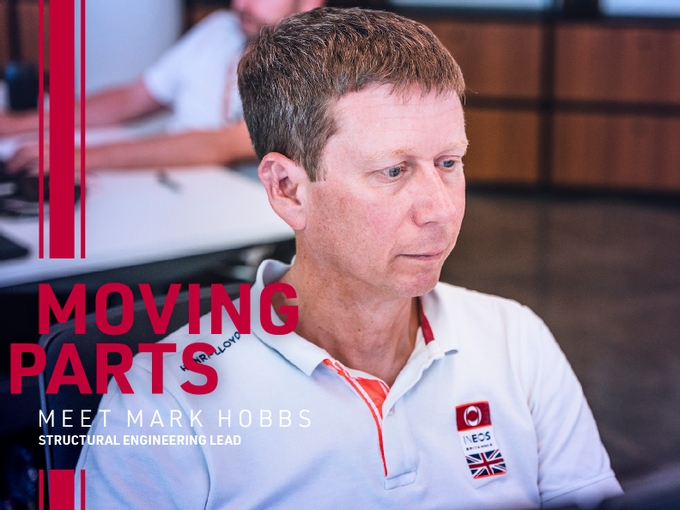Mark Hobbs leads INEOS Britannia’s structural engineering team, carrying the responsibility for all the structural engineering across the yacht. He grew up in Tunbridge Wells, in Kent, and lived there until he was eight, before moving to Bermuda with his family for a couple of years. He now lives in Cowes, one of Britain’s great sailing hubs, on the Isle of Wight.
“When we came back from Bermuda I learned to sail on a local reservoir, Bewl Valley in Kent. And that was in an Optimist initially. Then I went onto 420s and then competed in team racing in Fireflies and Laser IIs when I went to university. I also progressed into day boats and keel boats there, it was a fairly standard progression.
“I studied maths, further maths, physics and chemistry at A-level and I was always interested in going into engineering. I saw the STEM subjects as the pathway to an engineering career. There's a wider range of skills you need for engineering though, it's not just about being analytical in numbers. And for me one of the really important skills is being able to convey ideas to people, and that can either be through talking to people, through writing reports or presentations or doing sketches. The skill of being able to draw something quickly in 3D is very important, because a picture paints a thousand words.
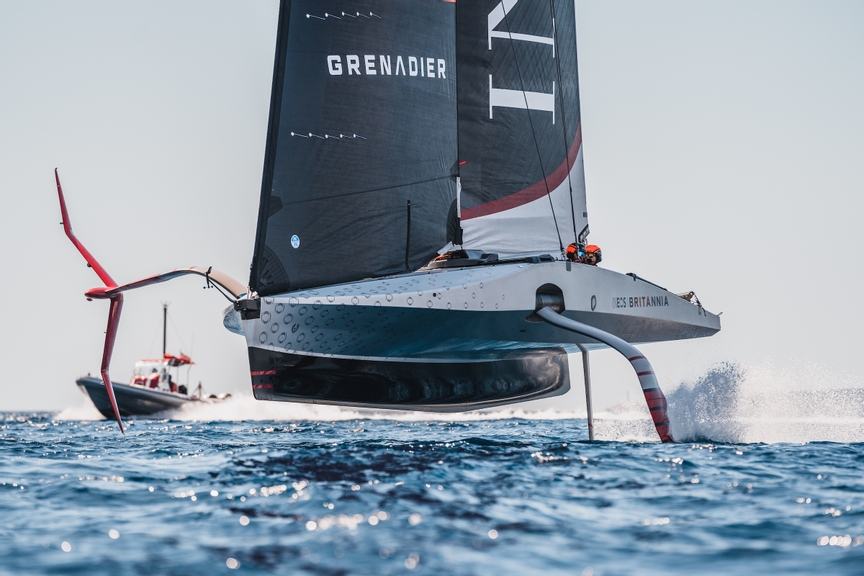 © Cameron Gregory
© Cameron Gregory
“I went on to study engineering at university, then after my initial degree, I went on to do a master’s in yacht design and then got offered an opportunity to do a Ph.D. I stayed on for that, looking at yacht rigs, which was a very interesting and challenging thing to go through. And then from there I developed an interest in lightweight materials and structural engineering, and that moved me into a job with SP as a structural engineer. They are a materials supplier who also had a structural engineering arm. I worked predominantly in the marine industry there.
“I worked on a whole range of boats, from a little lake racer to IMOCA boats, one of the old Hugo Boss boats which was built down in Lymington. I did some work on the early canting systems for the maxi canting keel boats as well, like Morning Glory and Pyewacket, Wild Oats and Alfa Romeo. There was also a range of high-performance cruising boats.
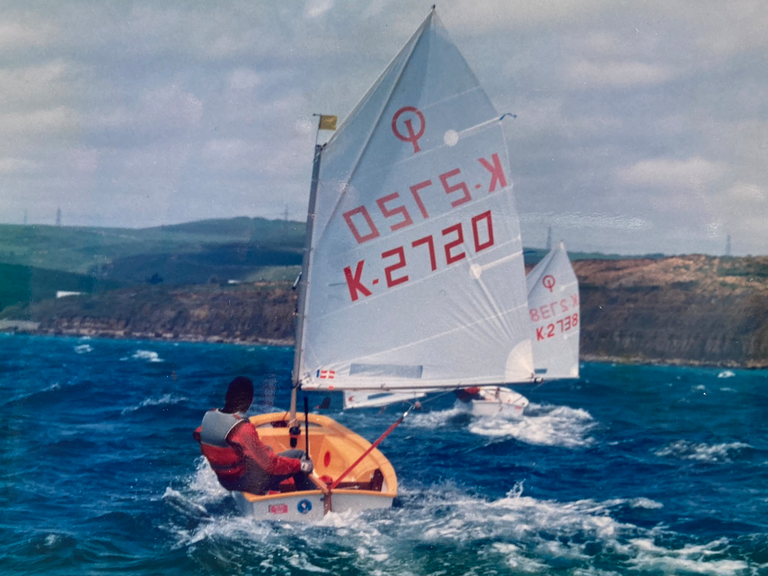
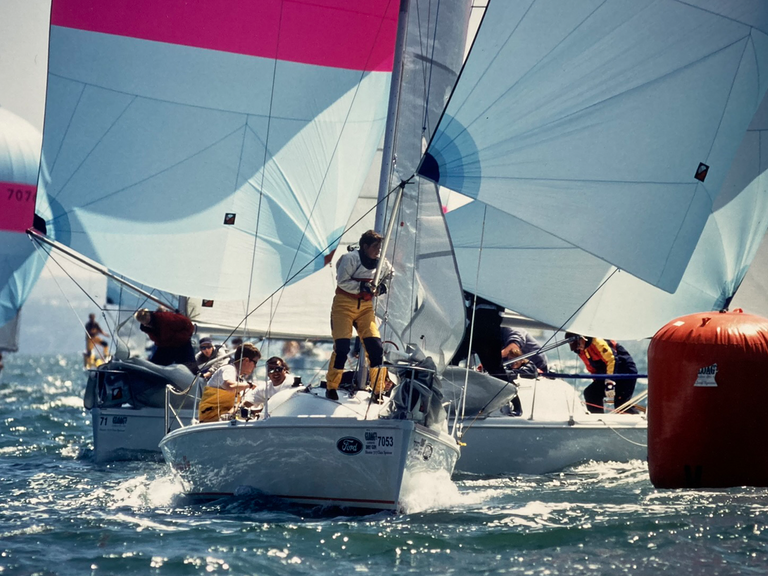
“After that, I moved on to work on architectural projects for a while. So, this was working predominately on large-scale structures in composite materials, doing large projects in the Middle East, and also working on a range of carbon fibre structures, special structures for Apple, projects for the new campus in California, the high-end retail stores, and the flagship store.
“And then an opportunity came up to join INEOS and it was a chance to go back into boats again. I joined INEOS Britannia in March 2023. Working on the architectural projects was really interesting, it was very good working with architects, seeing how they approach problems and how they come up with solutions. There’s lots of learning from different industries and it’s great to take those learnings backwards and forwards… but my heart’s always been with boats and working on the America’s Cup has always been a childhood dream for me.
“When I was at SP, I worked on an America’s Cup boat for the 2007 Cup campaign in Valencia, when I did the structure for Victory Challenge, which was the Swedish challenger. It was very interesting, but I’ve always wanted to work on a Cup campaign for a British team and so when the opportunity came up, I jumped at the chance and I’m very happy to be here — boats have always had a place in my heart.
“I used to follow the America’s Cup when I was a child and when I was at school, we entered a quiz program, and I actually chose my specialist subject as the America’s Cup. It was probably a bit left-field, and in a way, it was almost a regret because I was asked a question on my specialist subject almost every round because it was seen as an interesting topic!
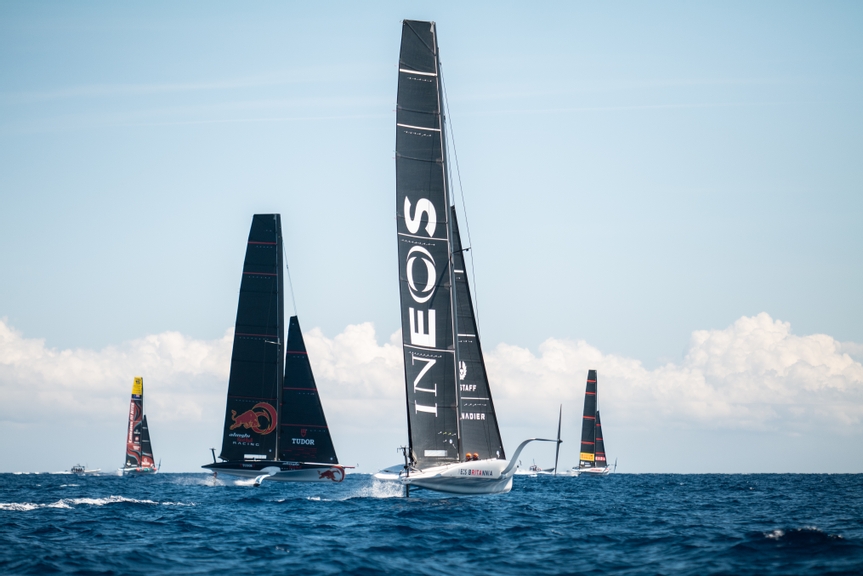 37th America’s Cup recon
37th America’s Cup recon
··Alinghi Red Bull Racing
··AC40-7
··D4 – Barcelona – Spain
© Alex Carabi / America’s Cup
Alex Carabi / America’s Cup
“I do love the Cup and all the intrigue that’s gone on with it. I remember when the Australians first won the Cup from the Americans and that was a really exciting campaign. It was the combination of the technical development they did with the boat, and the way the team worked… it was very interesting, and it helped start my interest in going into yacht design and structures at an early age.
“And now, I look after the team of structural engineers working on British America’s Cup boats. We’re responsible for the structures, everything from the tips of the wings up to the top of the mast. It’s our job to try and make the structures that will provide the highest performance possible, but also be able to withstand the loads and the conditions that the racing throws at them. We deal with structures which are very optimized. We want to try and reduce the weight as much as possible and it’s quite a challenge.
“The weight limit of the boats has gone down so we’ve got to save weight wherever we can, but we’re dealing with quite a dynamic environment. The loads are quite uncertain, and the boats are pushed very hard. So we have to make sure that they’re reliable, while still meeting their performance objectives, and that covers a whole range of engineering challenges.
“We get involved early on, in the materials choice, looking at materials testing, trying to determine the strengths of what we’re using and trying to make sure we’re using the best materials we can for the boat within the constraints of the rules. We get involved in the conceptual design, coming up with structures that will work and making sure that the design options that are being proposed are feasible and will actually work in the boat.
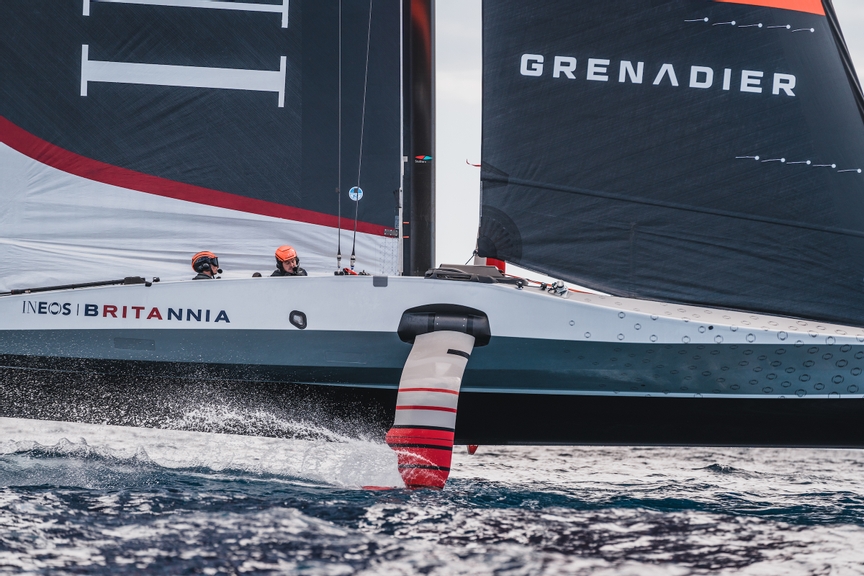 © Cameron Gregory
© Cameron Gregory
“We get involved in the detailed work with the design group, working with them to refine the designs and the structures, all the way through to doing the testing of the boat. We do proof-testing of the components, we do proof-testing of the boat when it’s assembled and then finally running into the sailing; monitoring the loads on the boat, making sure it’s staying within the operational envelopes. And if we do ever get any cases where we’re exceeding the design loads, we check the boat structure is okay and still suitable for going forwards after that.
“Compared to other boats, this is a big challenge because we’re going to a much higher level of refinement here, because it’s all about the performance of the boat. You’re trying to get everything as close to the wire as you possibly can — it’s always a delicate balancing act, being strong enough and reliable enough to work, but not be overweight. In the America’s Cup, you’re often pushing a lot harder than other projects. At the same time, you have more time and resources available, but equally, you have to use those wisely to make sure you get the best performance out of the boat.
“One of the interesting things working on this campaign has been the connection with Mercedes F1. It’s important to be open to new ideas. And that was something I found very interesting working with the architectural projects as well, it opens your mind a bit more to the opportunities and things you can do. We’ve been fortunate to be able to use some of the resources from the MGP groups, and that has brought some new ideas to the structures. We’ve been working a lot with them on optimization of structures.
“We’ve been using some of the tools to come up with new ideas which challenge your experience and the way you typically do things. And often you end up working through solutions and coming back to something very similar to what you started with, but at other times it’s opened up some new ideas for us and some new ways forward with the structure.
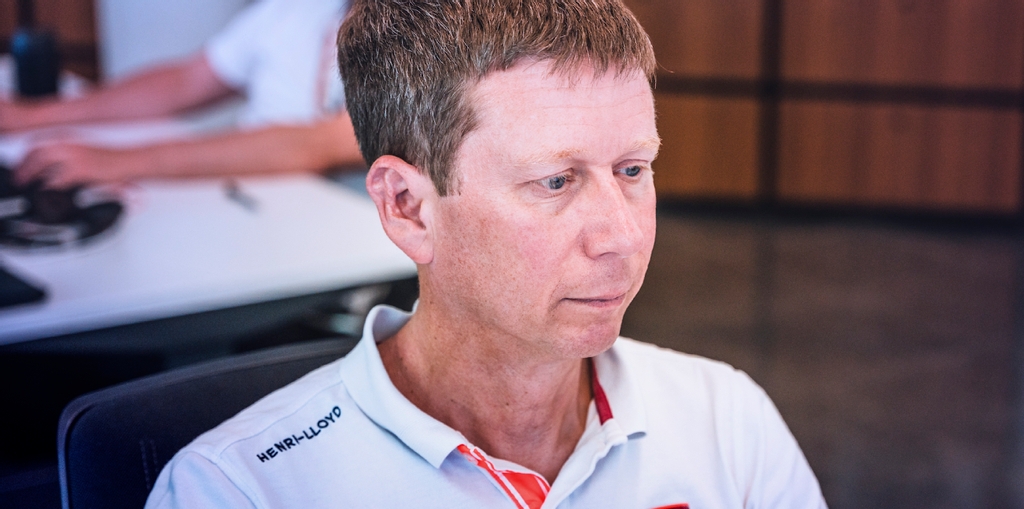
“So, some of the key points for us have been the dates when we first released the hull lines and then started building the boat. It marked a transition from the design phase to the building phase, starting to work with the build team to actually realize the structure. And that’s always something I’ve enjoyed a lot about the role. It’s not just about working out the design of it, but we also get involved in the build of the boat as well.
“One of the things I really like about the marine industry is that there’s still a degree of artisanship, a real artisan element to the construction. We have very skilled guys working on the boat build and you learn a lot by working with them, both in terms of what’s feasible, and how to come up with the best structure and how that can be realized. It’s a really rewarding process to actually see what you’ve worked on take shape and become reality, learning with the guys and working out with them how to do things better. It’s always a good learning experience.
“I guess the favourite part of my job is seeing the results of your work come to life. So that’s not only when you first see the boat finished and built, and when we do the testing, but also when you see the boat go out sailing. It was the reason I wanted to go into engineering in the first place, I wanted to be involved in a career where I was creating something, and I could see the results of my work being realized.
“It’s very rewarding, but it does bring some nervous moments when the boat’s out there, you know how heavily loaded it is, you know how close to the line you have to push the structure. And at the end of the day, the campaign and the people on the boat are relying on us to give them a reliable boat that will hopefully do the job and bring the Cup home.
“I still enjoy sailing myself too, I currently sail on a 40-foot classic boat, which is based in Cowes. So, it’s very different to the ones I’m working on here. I love the fact that when you get out on the water you leave the land behind, and if you’re having a stressful time or things are difficult, you get out on the boat and within a few minutes all that’s disappeared and you’re thinking about sailing and being out on the sea. And that’s something I really love. I love being by the sea. I’ve lived life by the sea for the past 20-odd years now. It’s always very calming to go down there, and sometimes I just sit there and listen to the waves.
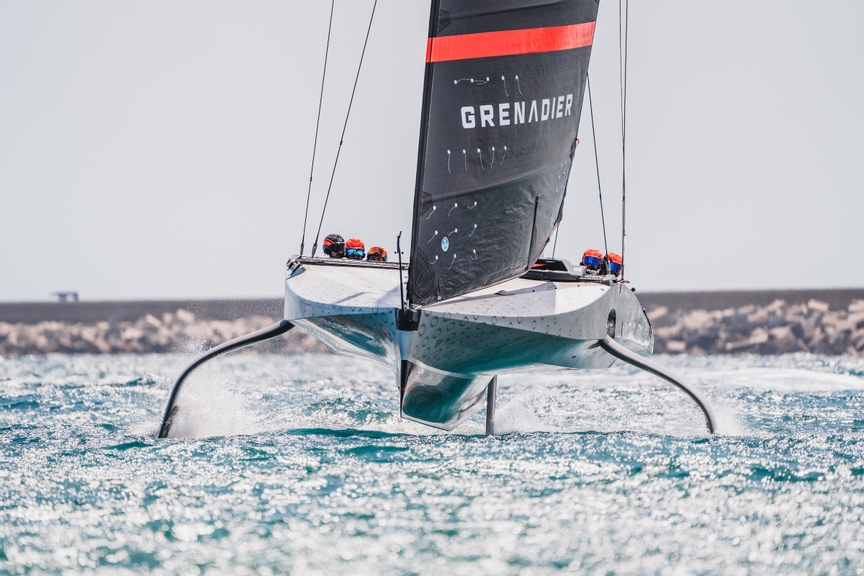 © Cameron Gregory
© Cameron Gregory
“I have a couple of kids and I remember when I got the role, and I told my family I was going to work for the America’s Cup campaign, my son nearly fell off his chair. He was like, really? Really? And I was like, yeah, really. And then when I told him that we were going to be based up in Brackley at the home of Mercedes Formula One, he fell off his chair again. He was bowled over by all this, it’s really nice that they’re excited about the career and interested in it.
“It’s also really nice to be able to go home and switch off from work a little bit. The America’s Cup can be a very intense working environment and you need to try and balance your life a bit and have a break from that. The reality of going home and doing the chores brings you down from the historic world of the America’s Cup. There’s nothing like hoovering the carpet to remind you that life still goes on.
“I really hope that the family will be able to come out to Barcelona and see the boat sailing and join in with that. My son came up to the site to see T6 [the team’s research and development boat] when it was being built, that was really nice to be able to show what you’re doing to people. I think it’s something I’m really proud, the work I do and the things we’re creating here. And it’s lovely to be able to share that with the family.
“I think I’ve been very lucky in my career because I’ve had the opportunity to work on a whole range of fascinating marine projects from racing boats, from the first chance to work on the America’s Cup back in Valencia, through to architectural projects where we worked on some really ground-breaking structures.
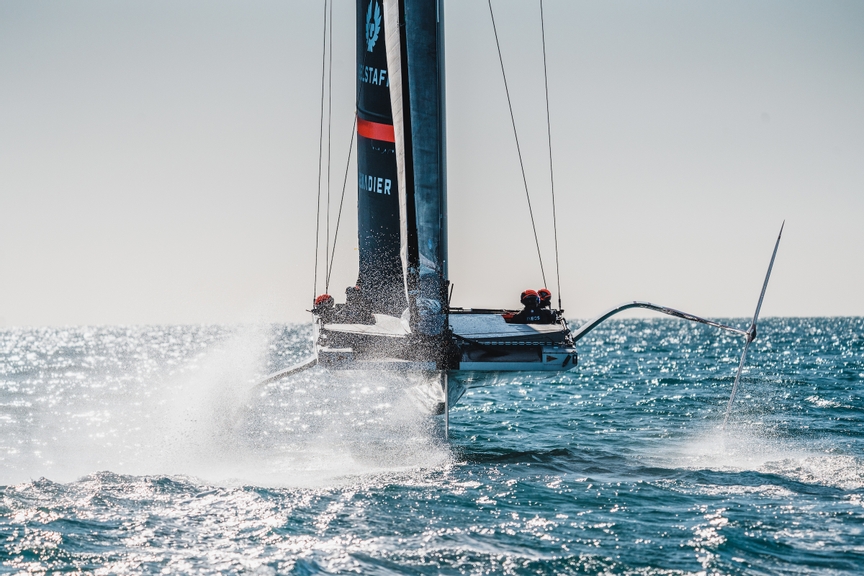 © Cameron Gregory
© Cameron Gregory
“We built a 50m diameter carbon fibre roof, which sits on a ring of glass, which had never been done before. And when these opportunities have come up, I think it’s important to take them, keep yourself open to new ideas and keep moving forwards because you always learn something. There’s something that you can take out of it, either on a technical level or a design level or a personal level, making new relationships and working with people.
“The America’s Cup is special on a number of levels though, it’s got a real mystique to it with the history that’s there. The fact of how long the competition has been going since the British lost the America’s Cup, and we haven’t managed to get it back yet, is a real driver for me. It’s a real motivator to try and get there and have a chance to bring the Cup home.
“On a technical level, it’s very interesting. It’s one of the very few projects where you can really get into a very fine level of detail, and really push the structure and the engineering very hard. We spend time optimizing and refining everything down to the last nuts and bolts, and the last millimetre of laminate over the whole boat.
“It’s also exciting to work with a wide range of people, all of whom are at the top of their game. And I think when you’re surrounded by people at that level, it naturally pushes you harder. It allows you to achieve things which you maybe didn’t think you could do before. And at the end of the day, well, to win the America’s Cup… it would be the fulfilment of a childhood dream. It would be absolutely marvellous to do it.”


